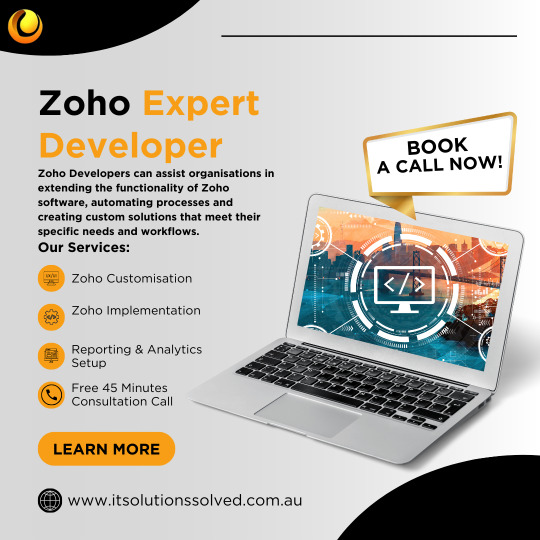Text

Boost Your Business with Zoho CRM in Australia
#zoho in australia#zoho crm australia#zoho partners australia#zoho support australia#zoho corporation australia
0 notes
Text
#zoho crm australia#zoho partners australia#zoho in australia#zoho corpration australia#zoho support australia
0 notes
Text
Boost Your Business with Zoho CRM – The Ultimate Automation Solution
0 notes
Text

Zoho Expert Developer – Get the Best Zoho Solutions for Your Business
0 notes
Text
Zoho Expert Developer – Get the Best Zoho Solutions for Your Business
0 notes
Text
Unlock the Best CRM Strategies for Business Growth | IT Solutions Solved
#crm marketing strategy#effective crm strategies#best crm strategies#best crm implementation strategies#crm strategy implementation#the best crm implementation strategies
0 notes
Text

Boost Your Business with the Best CRM for Small Businesses
#free crm for small business#small business crm#best crm for small business#crm software for small business#free crm software for small business
0 notes
Text
Boost Your Business with the Best CRM for Small Businesses
#small#best crm for small business#free crm for small business#crm software for small business#free crm software for small business
0 notes
Text
Discover the Best CRM Consultants in Brisbane
0 notes
Text

Expert CRM Consultants in Sydney| Streamline Your Business with IT Solutions Solved
0 notes
Text
Expert CRM Consultants in Sydney| Streamline Your Business with IT Solutions Solved
0 notes
Text
Discover the Best CRM Consultants in Perth
0 notes
Text

Looking for the Best CRM Consultants in Melbourne?
0 notes
Text
Looking for the Best CRM Consultants in Melbourne?
0 notes
Text
Trusted Zoho Partner in Australia - IT Solutions Solved
0 notes
Text

Trusted Zoho Partner in Australia - IT Solutions Solved
0 notes
Text
Unlock Business Efficiency with Zoho One
0 notes